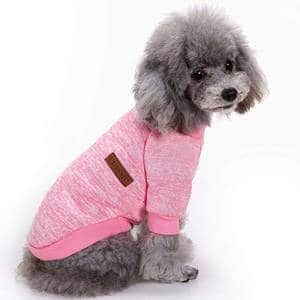One service dog, a Golden Retriever named Sampson, is the first dog allowed in a scientific laboratory at the University of Illinois. Sampson is a service dog who has been trained to wear personal protective equipment (PPE) in addition to his service dog training. His owner, Joey Ramp, is a neuroscientist who relies on Sampson to help her with various daily activities after a horseback riding accident left her disabled.
After her accident in 2006, Ramp decided to pursue degrees in neuroscience. The problem was that Sampson was not allowed in the science labs that Ramp needed to use in order to complete her degrees. Her solution was to work with her university in order to develop the requirements that would allow service dogs to safely accompany their owners into the labs. While Ramp benefits from the new policy, she has also made it possible for other disabled students who rely on service dogs to go into the STEM industries that entail working in labs.
Ramp was a horse trainer who had an accident 15 years ago. She broke over 20 bones, including several in her face, and suffered damage to her prefrontal cortex. Sampson helps her by recognizing the signs of her PTSD and also by acting as a physical brace so she can pick up items that she drops, among other things.

Dogs typically are not allowed in research laboratories for a variety of reasons. One is that if there are other animals in the lab, those animals might react to the dogs’ presence. There are also dangers inherent to being in a laboratory at all, which humans mitigate by wearing PPE.
In addition to the 18 months of training that Sampson went through to become a service dog and learn his tasks to help his owner, there were nine more months of training to get him comfortable with wearing goggles, shoes, and a special canine lab jacket. There are other rules, too; he has a special rug that he must stay on, and he had to be trained not to retrieve certain items that would be unsafe for him. He was also taught how to respond calmly to emergency sirens that might necessitate him and Ramp needing to evacuate.
Many service dogs have had to face some adjustments during the COVID-19 pandemic as their handlers are spending more time at home due to lockdowns and practicing social distancing. Service dogs, who are used to a more active working lifestyle, may experience boredom and frustration from a lack of stimulation, so the ability of some service dogs to sport their own PPE and stay busy with work in labs and similar environments is certainly a welcome advancement.
Not all laboratories would be safe for a service dog to enter. For example, at the University of Indiana, dogs are not allowed in labs where radioactive materials are in use. This is for the safety of the dog. While dogs are not allowed in certain labs utilizing biological materials as a general rule, students can ask for an exemption if they have a special need that requires the dog to be with them in that type of lab.
Ramp also encountered roadblocks that did not allow her to bring Sampson into labs with live rats. The concern was that the rats might become aggressive because they had not been exposed to dogs. Ramp was able to apply for and obtain a $50,000 grant to study how the stress hormones in mice would change when exposed to a dog, but the university did not allow her to perform the study. Still, Ramp continued to pursue fairness and increased opportunities for students who rely on service dogs.

Approximately half a million Americans have service dogs for a wide variety of reasons. Some, like Sampson, are trained to notice the signs of PTSD and other mental health issues. Others help owners who are visually impaired and act as guide dogs. There are also service dogs that can alert their owners when they are showing signs of an impending epileptic seizure, and still others who act as hearing dogs for the Deaf.
Like most service dogs, Sampson is just a regular pup when he’s home. He plays, rolls around in the dirt, and is a great companion in addition to being an essential part of his owner’s day. Sometimes when he’s out playing, Ramp will put goggles on Sampson to keep him used to regularly wearing his PPE. She says that she knows that he looks adorable and that people are interested and curious about why he’s wearing goggles but notes that it’s important that the public understand that Sampson is working.
People should not try to pet or interact with service dogs without their owners’ express permission. This is because petting a service dog can interrupt their focus, which is to help their owner. It’s fine to talk to and interact with their owner, but the dog should be ignored. Even though it’s hard to not talk to or scratch the ears of a dog who is wearing goggles or a service vest, it’s imperative that these hardworking pups are not distracted, so it’s best to just pretend they are not there.
Featured Photo Courtesy: Sampson the Service Dog on Twitter







